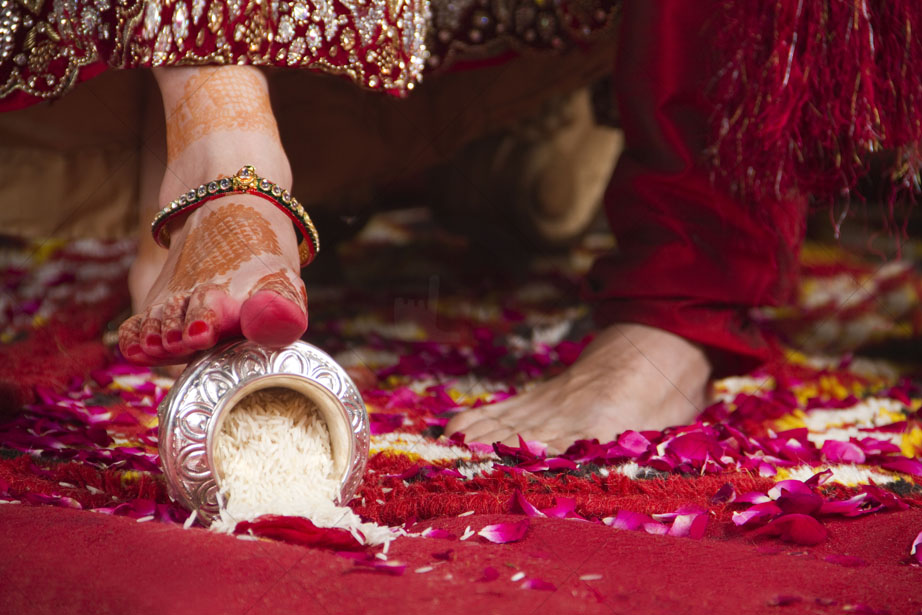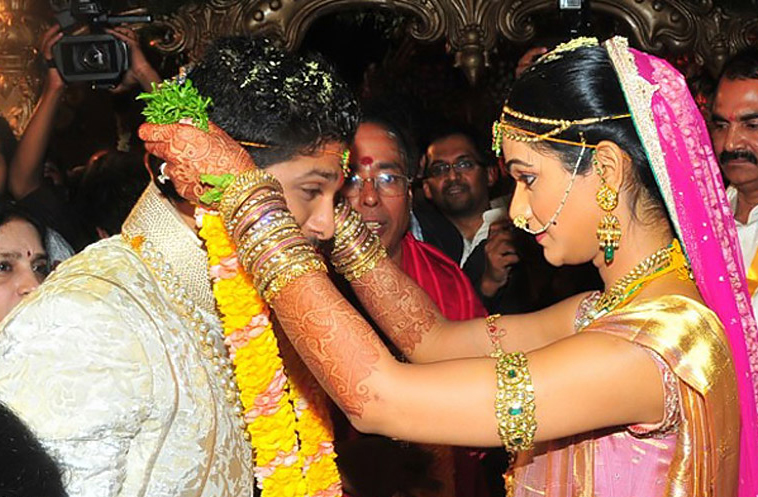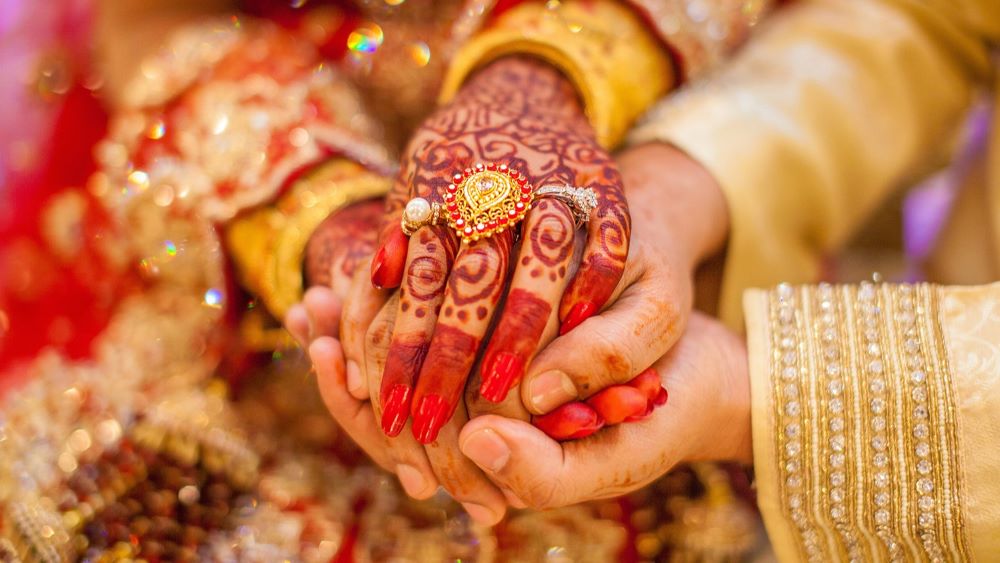Welcome to the world of Indian wedding traditions! You are in for a treat if the fascinating heritage, culture, and history of India captivate you. The Indian wedding is one of the world’s most elaborate and joyful celebrations, and the subject of this blog is its intricacies. We hope to provide you with a comprehensive and engaging guide to the pre-wedding rituals, wedding day customs, and post-wedding ceremonies that make up a traditional Indian wedding, whether you are a groom-to-be, a bride-to-be, or just a curious reader. Therefore, unwind, unwind, and get ready to embark on a journey that is brimming with vivid colors, beautiful music, and a wealth of symbolism.
Pre-Wedding Ceremonies
Traditional Indian weddings include pre-wedding ceremonies that are often as exciting and elaborate as the wedding itself. The families of the bride and groom can come together and celebrate the upcoming union during these ceremonies. Here are some of the most common practices before getting married:
Engagement: A small ceremony typically marks the engagement, which is a formal announcement of the couple’s intention to get married. Close friends and family are typically present. The couple exchanges rings and frequently receives blessings from their elders during the engagement.
Haldi: A paste made of turmeric, sandalwood, and other ingredients is applied to the bride and groom’s skin in the Haldi ceremony, a Hindu pre-wedding ritual, to purify and brighten their complexion. Additionally, it is believed that this ceremony will protect the couple from evil spirits and bring them luck.

Mehndi: The bride’s henna body art is honored during the Mehndi ceremony. It is believed that the bride’s hands and feet are decorated with intricate designs that bring fertility and good fortune. To celebrate the bride, friends and family frequently gather to apply henna to their own hands.
Sangeet: A fun-filled evening of music, dance, and celebration is the Sangeet ceremony. The bride and groom’s friends and family get together to sing, dance, and celebrate their union. The ceremony is a wonderful opportunity for everyone to bond and have fun, and the bride and groom frequently take part in special dances together.
Indian wedding traditions include these pre-wedding ceremonies, which provide a glimpse into the country’s extensive cultural heritage. Families use them as a way to celebrate the couple and wish them a lifetime of love and happiness.
Wedding Day Rituals
The rituals performed on the wedding day are the main part of an Indian wedding and are full of symbolism and tradition. A closer look at some of the most common practices on the wedding day:
Jaimala: The bride and groom exchange flower garlands during the Jaimala ceremony. The couple’s acceptance of one another and commitment to a life together are symbolized by this ritual.
Baraat: The groom’s arrival at the wedding venue on horseback or in a decorated vehicle with family and friends is known as the Baraat. The energetic and joyful procession that precedes it sets the tone for the remainder of the wedding day.
Kanyadaan: In the Hindu ritual known as the Kanyadaan, the groom’s father gives his daughter’s hand in marriage to the bride. This is a sacred act that represents the bride’s father’s passing on of responsibility to her husband.

Phere Saat: The bride and groom exchange seven vows during the Saat Phere ceremony. The couple makes seven vows to love, respect, and cherish one another for the rest of their lives during this ceremony.
Dan Sindoor: The groom applies sindoor, a red powder, to the bride’s hair parting in the Sindoor Daan ceremony, the final wedding day ritual. The bride’s marriage and devotion to her husband are symbolized by this.
Vidaai: The bride’s final goodbye to her family and departure with her husband is marked by the Vidaai ceremony, which is a bittersweet moment. The bride’s new life, her dedication to her husband, and their future together are all represented by this ritual.
As a way for families and communities to celebrate the couple and wish them a lifetime of happiness and love, these wedding day rituals are an essential component of the Indian wedding tradition.
Post-Wedding Ceremonies
A traditional Indian wedding’s post-wedding ceremonies serve to strengthen the couple’s bond and establish their place in the community. Some of the most common post-wedding rituals are as follows:
Grihapravesh: The bride’s arrival at her husband’s house is marked by the Grihapravesh ceremony. The bride is greeted by her mother-in-law and frequently receives blessings and gifts as part of this custom.
Bidaai: In the Hindu bidaai ceremony, the bride says her final goodbyes to her parents and moves out of their home as a single woman. This is a touching moment that frequently results in the bride’s family wishing her well and crying.

Reception: Friends, family, and members of the community attend the reception, which is a celebration held in their honor. This is a chance for the couple to show off their wedding attire and celebrate the couple’s union with everyone.
Shaddi: The Shaddi ceremony, which marks the end of the marriage and is regarded as private, is considered to be between the bride and groom.
Vidaai: The bride’s parents bid her farewell during the Vidaai ceremony, which is a symbol of the bride’s entry into her new life with her husband.
These ceremonies after the wedding are an important part of the Indian wedding tradition. They serve to celebrate the couple and bring the community together to support them. They serve as a reminder of the love and commitment that the bride and groom have made to one another and are a time of joy, happiness, and celebration.
Cultural and Religious Significance
The Indian culture’s values and beliefs are reflected in the cultural and religious significance of traditional Indian weddings. The following are some important cultural and religious aspects of an Indian wedding:
Hinduism: The rituals and traditions of Hindu weddings are deeply rooted in religion and tradition, and they have been handed down through the generations. The seven vows and many of the wedding day rituals, like the exchange of flower garlands, are taken from Hindu scripture and are regarded as sacred acts.
Family: Indian weddings are a time to celebrate not only the couple but also their families. The Kanyadaan and the Bidaai, among other rituals, serve to unite the bride and groom’s families by transferring responsibility for the bride from her father to her husband.

Community: Friends and community members gather to celebrate the couple’s union at Indian weddings, which are also a celebration of the community. The reception is a particularly significant chance for the community to unite and express their congratulations and support to the newlyweds.
Symbolism: Indian weddings are full of rituals and symbolic actions that help the couple feel more committed to one another, as well as to their families and communities. The Sindoor Daan ceremony, for instance, represents the bride’s commitment to her husband and her married status, while the Grihapravesh ceremony marks the bride’s entry into her new home and integration into her husband’s family.
These cultural and religious elements help to reinforce the Indian people’s values and beliefs and are an important part of the Indian wedding tradition. They are a testament to the rich cultural heritage of India and serve as a framework for the couple to celebrate their love and commitment to one another, as well as to their families and communities.
Legends Behind the Rituals
There are fascinating legends and stories behind many of the traditional Indian wedding rituals, which explain their significance and origins. A few examples include:
Haldi Ritual: The Haldi ceremony, according to Hindu legend, was created to shield the bride and groom from evil spirits and negative energy. It is believed that the turmeric, sandalwood, and other ingredients in the paste will bring the couple luck and blessings.
Ceremony of Mehendi: It is believed that the Mehendi ceremony was started in ancient India as a way to bring luck and prosperity to the bride. It is said that the bride and groom’s love and commitment are represented by the intricate designs on the bride’s hands.

Seven oaths: The seven vows, also known as the Saat Phere, are a crucial part of the Hindu wedding ceremony. The Vedas, the Hindu scripture, are said to have inspired them. The bride and groom take the seven vows as a sign of their commitment to one another as well as to their families and communities.
Kanyadaan: It is believed that the Hindu epic Mahabharata is the source of the Kanyadaan ceremony, in which the bride’s father proposes to the groom. In the story, the prince Arjuna weds the princess Draupadi, and her father, King Drupada, performs the Kanyadaan ritual to show his support for the couple and his blessing.
The cultural and religious significance of the traditional Indian wedding rituals are bolstered and the couple’s connection to their heritage and traditions is strengthened by these myths and legends. They also strengthen the bonds of love and commitment that are at the core of a traditional Indian wedding by bringing the couple, their families, and their communities together.
Conclusion
Love, commitment, and a couple’s cultural and religious heritage are all celebrated at traditional Indian weddings. From the pre-wedding Haldi and Mehendi ceremonies to the wedding day Seven Vows and Kanyadaan, the various rituals and ceremonies reinforce the couple’s love and dedication to one another, as well as to their families and communities. The couple’s connection to their heritage and traditions is strengthened by the legends and stories behind these rituals, which also provide a rich cultural and religious context for the wedding celebration. The Indian wedding custom is a sign of India’s rich cultural heritage and the long-lasting power of love and commitment in forming unified families and communities.
FAQs
1. How does an Indian wedding typically look like?
Pre-wedding events like Haldi and Mehendi, the Seven Vows ceremony on the wedding day, and post-wedding events like the Grihapravesh and the reception are all part of a traditional Indian wedding, which lasts for several days. The wedding is a celebration of the couple’s love and commitment, as well as their families and communities, and it is steeped in cultural and religious significance.
2. How long does an Indian wedding typically last?
Depending on the family and community’s customs, a traditional Indian wedding can take anywhere from two to seven days.
3. What does the Haldi ceremony mean to you?
A paste made of turmeric, sandalwood, and other ingredients is applied to the bride and groom in the Haldi ceremony, a pre-wedding ritual. It is believed to shield the couple from evil spirits and negative energy and to bring them luck and blessings.
4. What does the Mehendi ceremony mean to you?
The Mehendi ceremony is a pre-wedding ritual in which henna paste is used to create intricate designs on the bride’s hands. The designs are said to bring the bride luck and prosperity and to represent the love and commitment between the bride and groom.
5. What are the Seven Vows’ implications?
The bride and groom take the Seven Vows, also known as the Saat Phere, as a sign of their commitment to one another, as well as to their families and communities, during the Hindu wedding ceremony. The vows are regarded as a sacred act and are said to have originated in Hindu scripture.
6. What significance does the Kanyadaan have?
The groom’s father gives the bride his hand in marriage during the Kanyadaan ceremony. It serves to unite the bride and groom’s families and is a representation of the father’s blessing and support for the union.
7. What is the Grihapravesh’s significance?
The bride’s arrival in her new home is celebrated in the post-wedding ceremony known as the Grihapravesh. It represents the bride’s new role as a wife and member of the family as well as her integration into her husband’s family.







